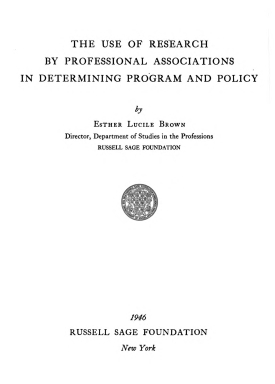Over the past two decades, there has been a change in federal low-income housing policy, with a reduction in spending on large-scale public housing developments and an increase in vouchers that participants use to find private housing units. Starting in the early 2000s, the Housing Choice Voucher program (HCV)—commonly referred to as “Section 8”—became the primary form of low-income housing assistance. Those with vouchers find their own housing in the private market and pay landlords 30% of their income in rent.
State and local governments have recently enacted minimum wage legislation to raise wages at the bottom of the wage distribution. However, such policies may affect how low-wage employers compensate and staff their workforces, potentially leading to negative employment effects and spillovers throughout the firm and labor market.
Do the decisions a judge makes in a case depend on the decisions and outcomes in recent cases that the judge has decided? Studies suggest that on average, a legal case is evaluated as somewhat more serious when assessed after a case that is viewed as relatively mild, and as somewhat less serious when judged after a more egregious one. The comparison appears to alter not only how a judge morally evaluates the severity of wrongful conduct, but also seems to influence the decision over the appropriate size of a civil punitive damage award or the length of a criminal sentence.

The Use of Research by Professional Associations in Determining Program and Policy
About This Book
A 1946 report suggesting how statistical research can be applied to better understand professional education and the structure and function of professional associations.
ESTHER LUCILE BROWN was director of the Department of Studies in the Professions at the Russell Sage Foundation.
Download
RSF Journal
View Book Series
Sign Up For Our Mailing List
Apply For Funding
Inequality in income, consumption, and wealth have all been increasing, but some evidence indicates that increased inequality in the joint distribution of the three measures of economic wellbeing exceeds that of inequality in any of the single distributions. However, to date, no single dataset currently allows researchers to examine rising inequality in the three measures simultaneously over a long period of time. As a result, studies often examine inequality and mobility using income, consumption, or wealth separately, without reference to the other two.
The U.S. labor market has experienced dramatic changes over the last several decades, including increased wage inequality and shifts in the distribution of jobs over time and across geographic regions. These changes raise questions about the associated changes in the tasks that workers perform and how skills applied to different tasks are rewarded. However, it is difficult to analyze the evolving structure of occupations because of limited availability of data measuring the skill requirements and task content of jobs.
The growing availability of digital administrative records combined with new prediction tools developed in machine learning has contributed to increased use of data to inform policy decisions based on predictions. Examples include hiring decisions based on predictions of an employee’s productivity, program services prioritized on predictions of who might benefit the most, allocation of police resources based on predictions about where crime is likely to occur, and pre-trial bail decisions are informed by predictions about risk.
The Great Recession profoundly disrupted local labor markets in the United States, an important destination for Mexican immigrants. If weakened labor demand contributed to increased return migration to Mexico and discouraged potential migrants from leaving, the recession could have also significantly affected the economic conditions in the Mexican regions with the strongest network ties to the hardest-hit U.S. destinations. Economists Brian Kovak and Brian Cadena will examine how losing access to a strong U.S.
Pagination
- Previous page
- Page 42
- Next page
